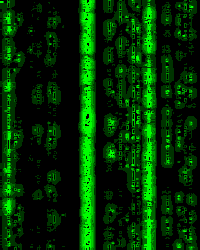The Swarming Organization
There are probably 1000's of collaborative practices in any given enterprise. Some are based in project or program related activities, while others emerge from n-tier value chain interactions. Many are rooted in knowledge management-specific activities where collaboration yields: Strategic decisions; morphs of current best approaches; or facilitates in-process capture and dissemination of learnings. It's the latter that we hear a lot about in the field these days and the common theme is this notion of collaboration in pursuit of decision superiority through the facilitation of rapidly forming teams.
We get to meet some really gifted people as we bring Groove to the marketplace. Those that we have worked with in the US Department of Defense, by far, are the most innovative in their vision for collaboration. A lot is at stake as we face an enemy whose organizational structure challenges our traditional command-and-control/mass-and-maneuver approaches to conflict. The threat of these terrorist networks is just that: networks of nodes that form, pulse, and disband. No head to chop off and the only thing that remains after the chaos is a cold trail and some electronic garbage. This asymmetric threat is the very thing that is driving our military to achieve a laser focus on realizing "information superiority" on the path to "decision superiority". It's the need for rapid formation of people across coalitions and geos, consuming sensor data, taking action, and then disbanding to fight yet another fight with someone else.
It struck me as I listened to a DoD briefing some months back that many of the business practices we hear about in the commercial sector share similar attributes. This revelation was fueled further by an article in the March 2002 issue of Wired magazine which focused on organizational "swarming." The article reveals that the notion of swarming finds its roots in DoD, but the relevance to business is striking. At the core is this idea of supporting small units that must come together quickly, having all-channel access to information, in real-time, that can be used to strike with certainty and with overwhelming force. In business, it too is about forming, making a great decision, and executing at the expense of the competitor. The path to decision superiority is rooted in people who gather in the form of small business teams, pulse, and then disband. Real edge phenomena.
What does this mean to the organization from the perspective of technology and doctrine? I believe that the successful organization recognizes swarming as:
Highly Decentralized: Decision superiority requires frameworks that facilitate connecting the right-people, inside and outside the organization. It's realizing the dream of connecting the matrixed organization in a just-in-time fashion and achieving true situational dominance
Dynamic: Innovation and decision-making is borne of unstructured, ad-hoc, and sometimes serendipitous interactions between people. Self-forming teams require self-forming technology that doesn't require IT intervention. Processes and technology must insure that the technology used to facilitate small unit swarming is as easy to use as the telephone or email.
Nonlinear and Adaptive: Business practices are highly nonlinear, hence you'll never hear me use the phrase "best practices" because there are only "current best approaches." Swarming organizations are dynamic in nature and recognize better ways every day. Hence, the notion of providing swarming technology in a center-based (read: centralized) metaphor is useless. Forcing people to work within the confines of a fixed set of functions will not work. Only a non-linear, component-based approach that allows teams to self-form, but also self-select the tools they need, will insure success.
Knowledge Creation at the Edge, with Consumption from the Center: People don't find knowledge, they create it (at the edge) when they consume data and information (from the center). When people collide around data and information, they create knowledge and intelligence.
People make decisions, not technology. You should challenge the next vendor that suggests otherwise. Recognizing and embracing these core tenets yields the secret sauce of decision superiority. Add to this a capability to institutionalize the outcomes of these swarming activities, and one has created a truly closed loop decision infrastructure. The creation of knowledge occurs at the edge, and the center is the killer app for knowledge consumption.
Let's also recognize that what I'm suggesting here requires a serious shift in organizational thinking. It begs for people in the enterprise to embrace disruptive innovations as part of their IT strategies. One must admit that to a large degree, we have moved our strategies back into the glass house. What I suggest is a massive shift away from deterministic, structured, permission-based interaction. An even bigger hurdle is the one we faces as managers: Can we embrace human chaos with as much zeal as we embrace order?

 | " Natural Cures They Don't Want You to Know About " ~ by Kevin Trudeau ~ CLICK HERE TO ORDER THIS INCREDIBLE BOOK ! (The Natural Cures Book As Seen on TV) |

